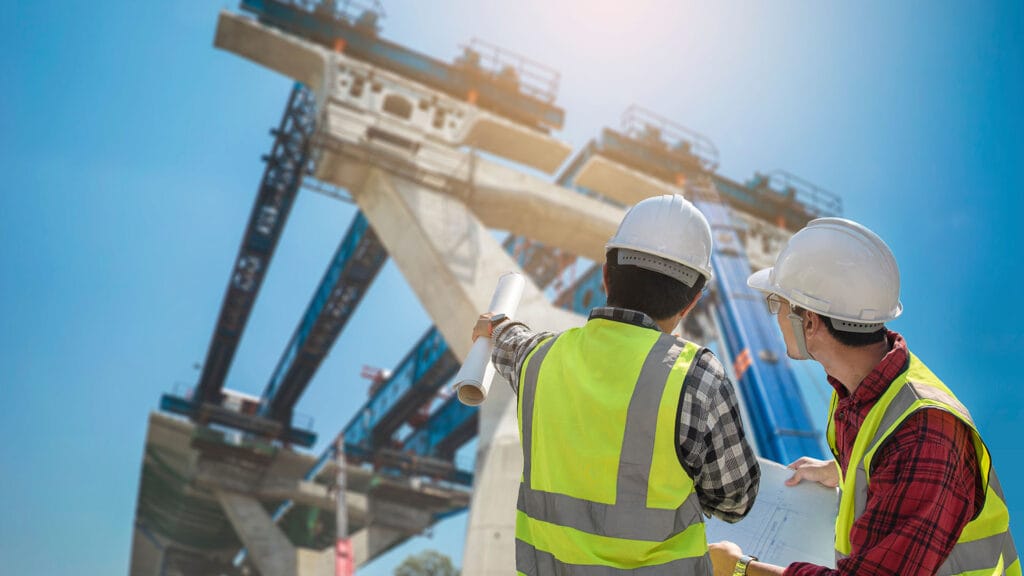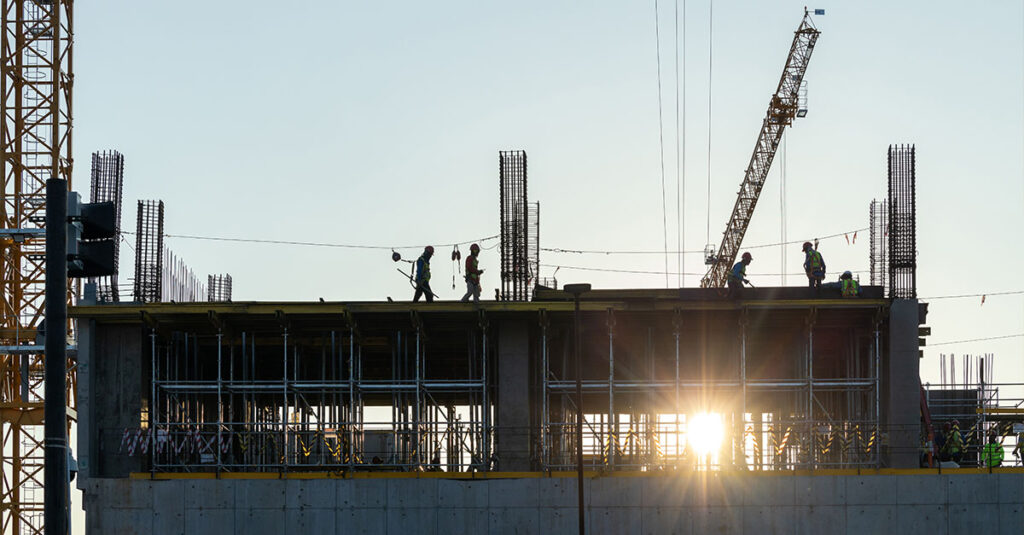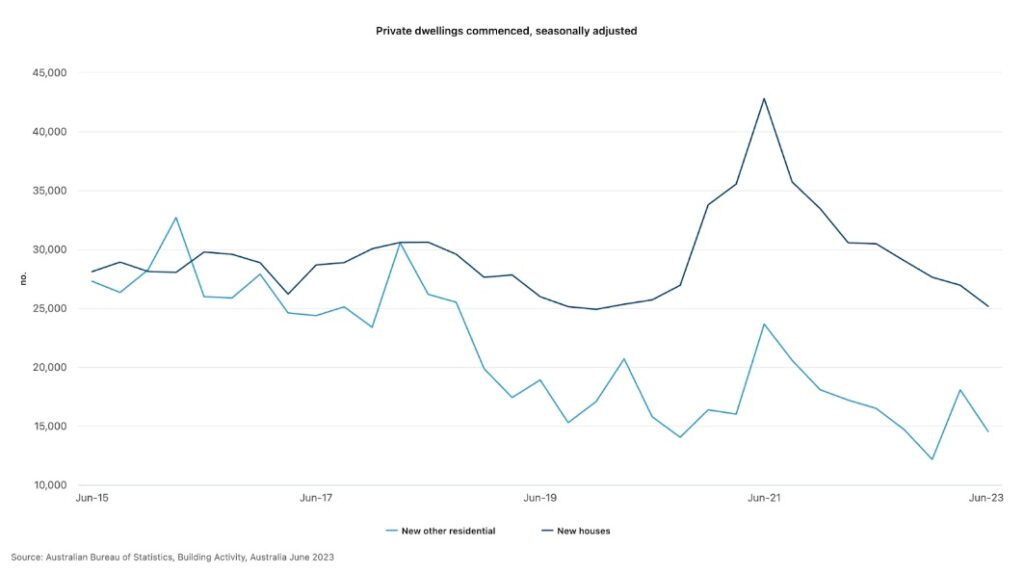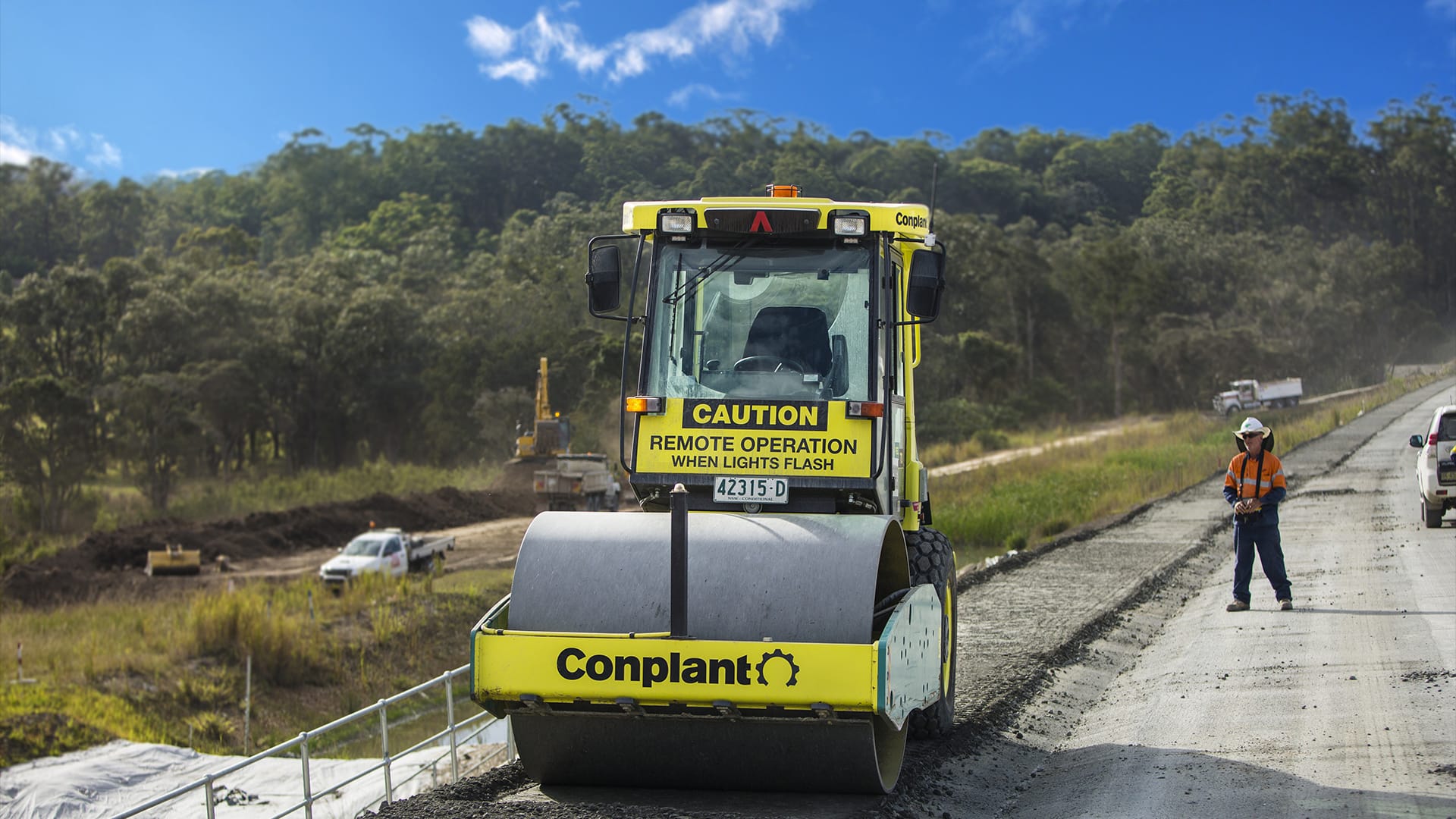How big is the construction industry in Australia?
Australia’s population has grown by around 1.3% per year on average over the past three decades, and is projected to reach 30 million between 2029 and 2033. A growing population means additional infrastructure needs, which continue to fuel development in the construction industry.
Let’s take a look at the state of the Australian construction sector, including its current scope, traits, challenges, opportunities, and future growth projections.
Contents:
Overview of the Construction Industry in Australia
Residential Construction Sector
Commercial and Public Construction Sector
Overview of Australia’s Construction Industry
The construction industry in Australia plays a significant role in the country’s economy, generating nearly $360 billion in revenue annually, which accounts for 9% of Australia’s GDP.
The industry is divided into three sub-industries:
- Building construction (including both residential and non-residential)
- Construction services (including site preparation, installation services, and completion services)
- Heavy and civil engineering construction
The construction sector is renowned for its resilience and adaptability. To meet evolving market demands and environmental concerns, it has progressively adopted innovative techniques and technologies. Despite its challenges, the sector continues to thrive, attracting investment and providing ongoing employment opportunities.

Key Statistics and Data
Over the years, Australia’s construction industry has grown consistently at an average annual rate of 2-3%, driven by factors such as population growth, urbanisation, and infrastructure development. However, due to obstacles like inflation, skills shortages, and supply chain disruptions, the sector is expected to shrink in 2023.
Australian Construction Industry – 2023 Data
- Total completed work rose by 0.4% to $59,010.6 million
- Building work increased by 0.2% to $31,459.8 million
Note: Total construction work represents all construction activities, including buildings and infrastructure projects. Building work specifically refers to construction related to buildings, excluding infrastructure projects.
Source: ABS, end Aug 2023
With constant pressure on building timelines, on-site safety is a priority. Learn more about Compaction and Construction Equipment Safety.

Employment Figures
The construction industry provides employment to over 1.2 million Australians. Following a decline in 2020-2021, this number is now back to positive growth, showing an encouraging recovery for the sector.
In 2025, employment in Australia’s construction industry is forecast to reach around 1.26 million people. However, it’s important to note that during some of the country’s biggest ongoing infrastructure projects, many Australian companies had to restrict their output in response to pandemic-enforced restrictions. The full economic impact of this will continue to play out in the coming years.
Private vs Public, Residential vs Non-Residential
Comparing figures from the June quarter of 2023, the value of construction work in the private sector ($15 million) oustripped that of the public sector ($12 million). (Source: ABS)
Activities vary across the industry from residential, non-residential and infrastructure projects. Data from 2022 showed that residential building and infrastructure development made up approximately 80% of construction work, while non-residential construction accounts for the remainder.

Residential Construction Sector
The growth rate of the residential construction sector has been relatively steady, with an annual average between 2-4%. At the end of August 2023, the total number of dwellings approved in Australia rose by 7%. This includes a 5.8% increase in private sector housing and a 9.4% surge in private sector dwellings excluding houses.
The total value of new residential buildings also rose by 3.2% during this period, showing the resilience of the sector in the face of higher interest rates and economic fluctuations.
Residential Construction Sector Snapshot
Work on large-scale apartment and non-residential building projects has deteriorated, contributing to weakness across many construction services, like elevator installation and electrical services.
ARB data shows that as of June 2023, new private sector other residential commencements fell 19.6%. Private sector house commencements fell 6.6%, following a fall of 2.5% in the March quarter and are down 17.4% through the year.

Commercial and Public Construction Sector
The commercial and public construction sector plays a vital role in the industry. The latest figures show that the gross value added by the construction industry amounted to over $150 billion.
Recently this sector has attracted substantial investment, with over 660 major public infrastructure projects underway across the country as of the end of 2022. Many of these projects focus on transport infrastructure, reflecting the government’s commitment to enhancing the transport networks.
New South Wales, Victoria, and Queensland have been at the forefront of this infrastructure push, with projects spanning across transport, energy, water, and telecommunications. Both the Federal and State governments have increased their infrastructure budgets to accommodate this growth, and Australia has ranked among the top 30 countries globally for its infrastructure initiatives.
However, despite these efforts, there’s an ongoing debate about whether Australia is lagging behind some of its Western counterparts in terms of infrastructure development and innovation. This highlights the need for continued investment and innovation to meet the evolving needs of the Australian population and remain competitive on the global stage.
The Role of Technology and Innovation
The recent adoption of innovative construction methods and digital tools has revolutionised the construction sector. Prefabrication and modular construction, for example, speeds up timelines while reducing on-site waste and disruption. These innovations unlock opportunities for faster project delivery and improved cost control while maintaining high-quality standards.
The use of recycled materials in Australia’s construction industry has also grown, aiming to reduce reliance on conventional materials and promote environmental efficiency. Green building certifications, such as Green Star and NABERS, have become standard for many projects, promoting resource efficiency, energy conservation, and reduced environmental impact. These technological advancements and sustainability practices are propelling the industry forward, making it more competitive and environmentally conscious.
Challenges and Opportunities
Despite being one of the strongest and most resilient sectors in the country, the construction industry faces several challenges, thankfully counterbalanced by opportunities for development and improvement.
CHALLENGES | OPPORTUNITIES |
Rising costs due to:
| Cost-saving alternatives:
|
Supply chain disruptions and delays due to:
| Strengthening of supply chain resilience:
|
Employment challenges:
| Workforce development:
|
Outdated scheduling systems leading to:
| Technological advancements:
|
Future of the Construction Industry in Australia
In the grand scheme of things, the world today is vastly different from what it was a decade ago. If we cast our minds back to construction trends of the 90s, it’s evident that the materials and techniques we currently use have advanced significantly in the subsequent years.
In essence, trends within the construction industry are shifting towards more sustainable and eco-conscious solutions, aimed at fighting global warming. At the same time, more construction teams are embracing new technologies to automate and improve their operations.
Despite stabilising prices, Australia’s construction industry is expected to contract by 2.6% in 2023. However, the long-term outlook is more positive with the sector forecast to grow at a 3.1% annually from 2024 to 2027, due to the government’s sustained emphasis on infrastructure development.
The growing appetite for energy-efficient buildings with a reduced carbon footprint, the rising demand for solar panels, and the implementation of government-backed incentives are poised to have a positive impact on the sector.
The industry is proactively addressing the challenges posed by material shortages and potential supply chain disruptions. To tackle these issues, and to develop a more sustainable building ethos, the sector is increasing the use of prefabricated materials and 3D printing technology, among other innovations.
Continued investment in the civil construction sector, bolstered by government initiatives and infrastructure projects, promises a bright future for the industry.
Summary
While there are indeed challenges on the horizon for the construction industry, there are positive signs ahead. The future holds substantial opportunities for growth, especially for those who are well-prepared and open to embracing change.
Need a hand with equipment hire, purchase, or advice? Get in touch!



